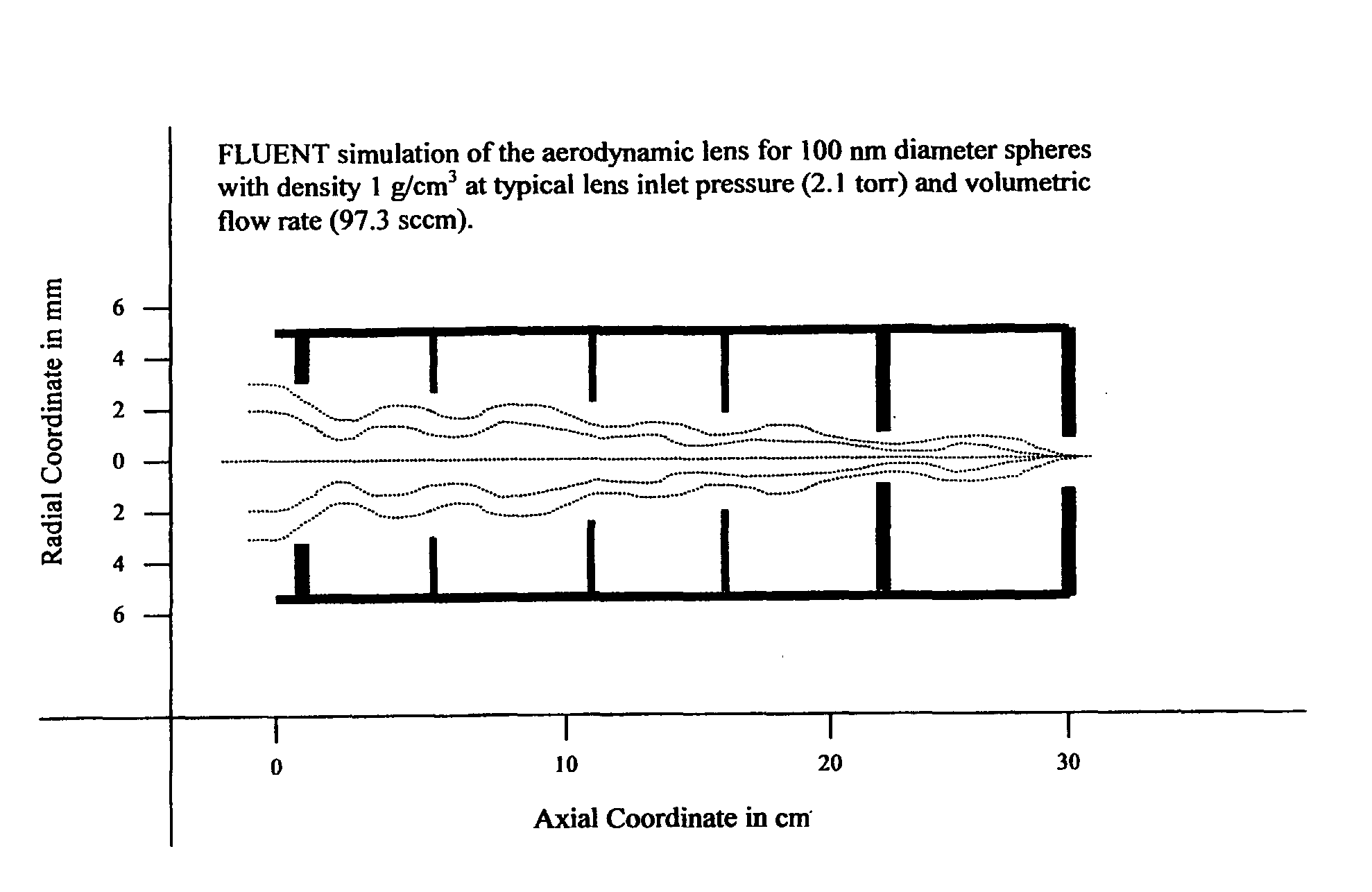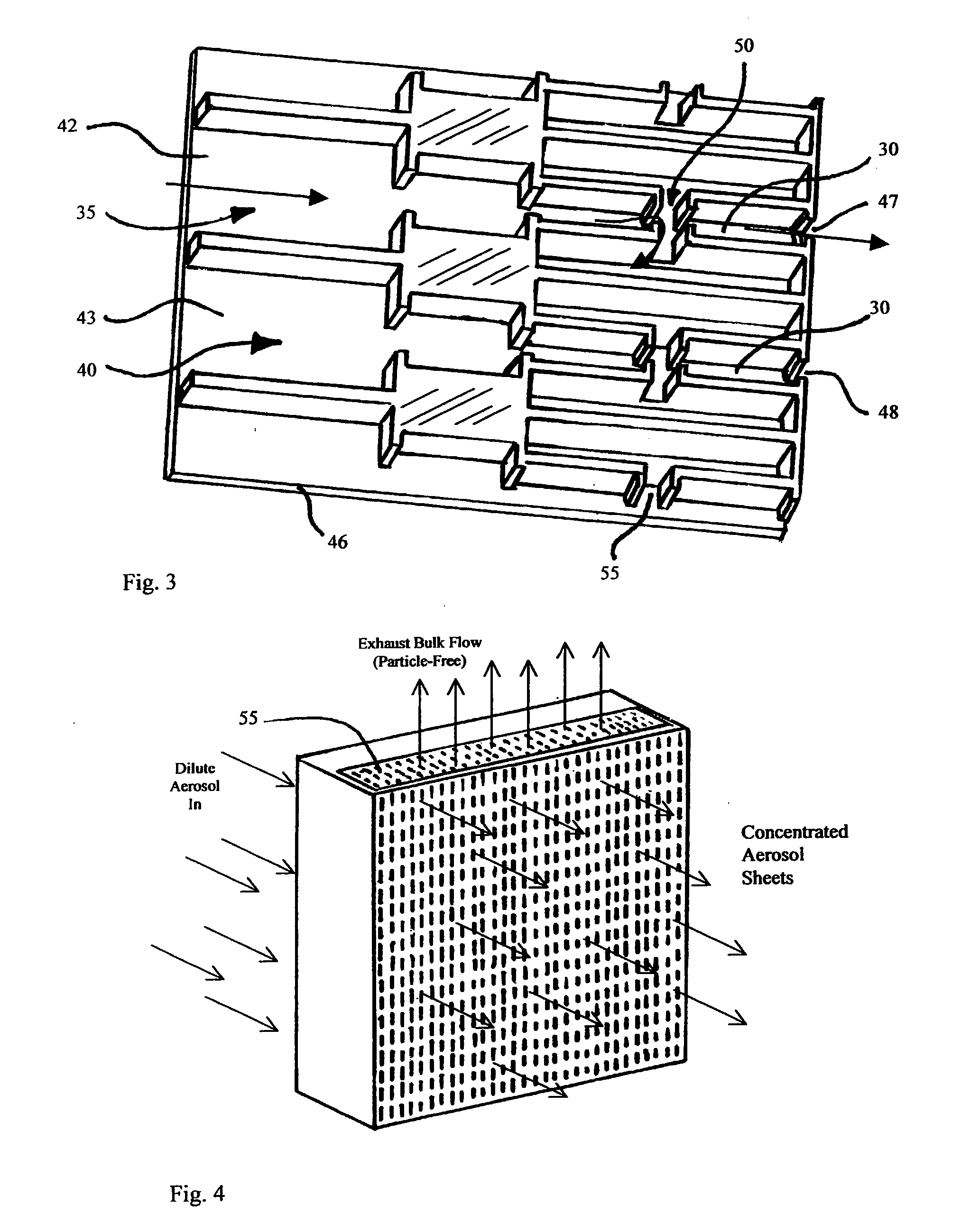Aerodynamic Lens Particle Separator
a technology of aerodynamic lens and particle separator, which is applied in the direction of gas current separation, separation process, instruments, etc., can solve the problems of large difficulty in precisely aligning a series of such small openings, the flow rate of such a device is still extremely small, and the maximum flow rate that can be accommodated by such small openings is extremely small
- Summary
- Abstract
- Description
- Claims
- Application Information
AI Technical Summary
Benefits of technology
Problems solved by technology
Method used
Image
Examples
Embodiment Construction
[0021] Turning now to the drawings, wherein like reference characters designate identical or corresponding parts, and more particularly to FIG. 2 thereof, an aerodynamic aerosol particle separator is shown having a train of four slit lenses in series. Each lens includes a slit baffle 20 projecting laterally into a longitudinal channel 25. The channel 25 becomes progressively narrower at each lens and the slit in each baffle also becomes narrower for each successive lens. A skimmer 27 just upstream of a collection chamber 30 allows for exit of clean air from the particle-entraining air flow, as shown. The light lines depict fluid streamlines and the darker stream lines depict particle trajectories.
[0022] In FIG. 3, a micro-fabricated array of two parallel aerosol particle separator slit lens trains 35 and 40 is shown having channels 42 and 43 extending through a fabricated structure 45. An aerosol flows through the channels 42 and 43 in the direction indicated by the arrows. Aerosol...
PUM
| Property | Measurement | Unit |
|---|---|---|
| particle diameters | aaaaa | aaaaa |
| diameter | aaaaa | aaaaa |
| diameters | aaaaa | aaaaa |
Abstract
Description
Claims
Application Information
 Login to View More
Login to View More - R&D
- Intellectual Property
- Life Sciences
- Materials
- Tech Scout
- Unparalleled Data Quality
- Higher Quality Content
- 60% Fewer Hallucinations
Browse by: Latest US Patents, China's latest patents, Technical Efficacy Thesaurus, Application Domain, Technology Topic, Popular Technical Reports.
© 2025 PatSnap. All rights reserved.Legal|Privacy policy|Modern Slavery Act Transparency Statement|Sitemap|About US| Contact US: help@patsnap.com



